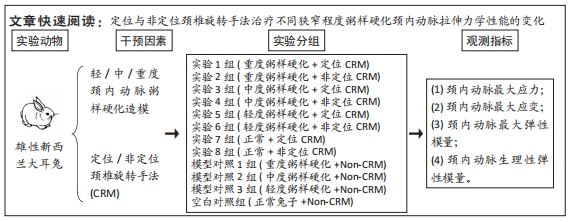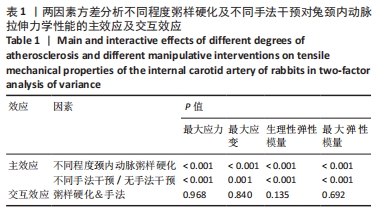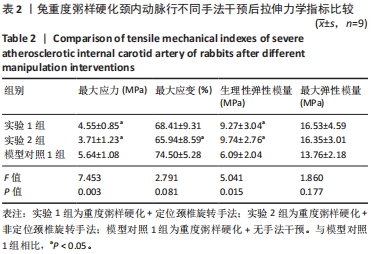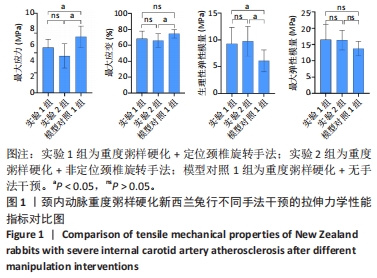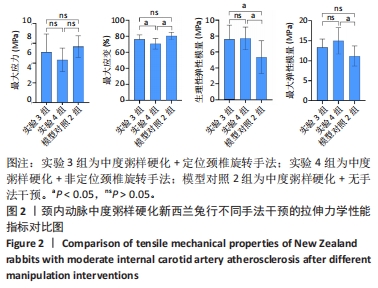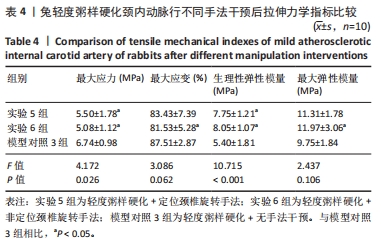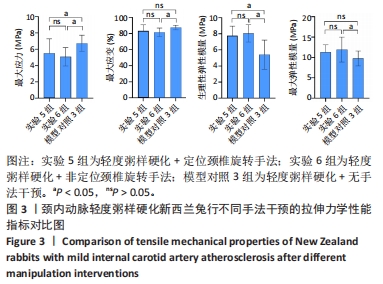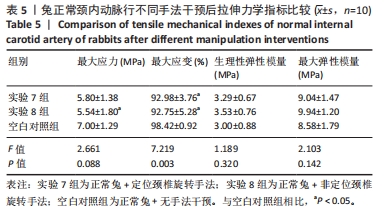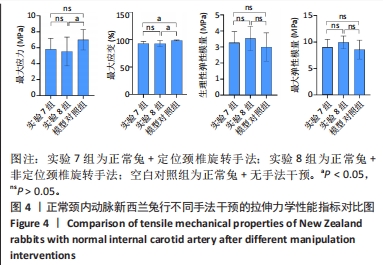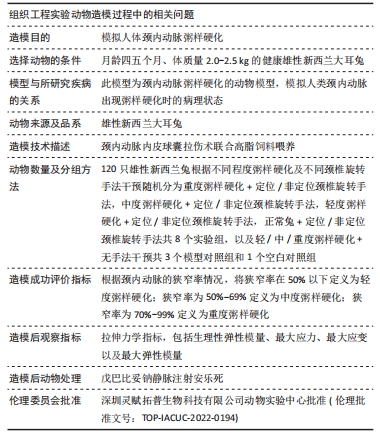[1] 黄学成,叶林强,江晓兵,等.不同体位下颈椎旋转手法对颈椎间盘位移和内在应力的影响[J].中国康复理论与实践,2017,23(12): 1470-1475.
[2] 钟仲,周红海,徐毅高,等. 颈椎定点旋转手法研究进展[J]. 颈腰痛杂志,2021,42(3):419-420+422.
[3] HAYNES M. Risk of vertebrobasilar stroke and chiropractic care: results of a population based case control and case-crossover study. Spine (Phila Pa 1976). 2011;36:92.
[4] CASSIDY JD, BOYLE E, COTE P, et al. Risk of carotid stroke after chiropractic care: a population based case cross over study. J Stroke Cerebrovasc Dis. 2017;26(4):842-850.
[5] DEBUHR NB, TRAGER RJ, TAO C. An Adult Patient With Acute Ischemic Stroke and Carotid Stenosis Presenting to a Chiropractor: A Case Report. Cureus. 2023;15:e37209.
[6] CHEN Y, MOFATTEH M, NGUYEN TN, et al. Carotid Artery Dissection and Ischemic Stroke Following Cervical Chiropractic Manipulation: Two Case Reports. Vasc Endovascular Surg. 2022;56:303-307.
[7] ZHANG S, QI J, ZHANG L, et al. Cervical Rotatory Manipulation Decreases Uniaxial Tensile Properties of Rabbit Atherosclerotic Internal Carotid Artery. Evid Based Complement Alternat Med. 2017;2017: 5189356.
[8] 中华人民共和国科学技术部. 关于善待实验动物的指导性意见[R]. 2006-09-30.
[9] MENG L, LV B, ZHANG S, et al. In vivo optical coherence tomography of experimental thrombosis in a rabbit carotid model. Heart. 2008;94(6): 777-780.
[10] 陶丽.彩色多普勒超声和CT血管造影对颈动脉狭窄患者颈动脉粥样硬化斑块的诊断价值[J].中外医学研究,2023,21(4):72-75.
[11] 李义凯. 推拿学[M]. 北京: 科学出版社,2012:97.
[12] XIONG J, WANG SM, ZHOU W, et al. Measurement and analysis of ultimate mechanical properties, stress-strain curve fit, and elastic modulus formula of human abdominal aortic aneurysm and nonaneurysmal abdominal aorta. J Vasc Surg. 2008;48(1):189-195.
[13] KHANAFER K, DUPREY A, ZAINAL M, et al. Determination of the elastic modulus of ascending thoracic aortic aneurysm at different ranges of pressure using uniaxial tensile testing. J Thorac Cardiovasc Surg. 2011;142(3): 682-686.
[14] MILNOR WR. Hemodynamics. 2nd. Baltimore: Williams &Wilkins, 1989.
[15] KARIMI A, NAVIDBAKHSH M. Measurement of the uniaxial mechanical properties of rat skin using different stress-strain definitions. Skin Res Technol. 2015;21(2):149-157.
[16] DUPREY A, KHANAFER K, SCHLICHT M, et al. In vitro characterisation of physiological and maximum elastic modulus of ascending thoracic aortic aneurysms using uniaxial tensile testing. Eur J Vasc Endovasc Surg. 2010;39(6):700-707.
[17] KWAN TW, WONG SS, HONG Y, et al. Epidemiology of Diabetes and Atherosclerotic Cardiovascular Disease Among Asian American Adults: Implications, Management, and Future Directions: A Scientific Statement From the American Heart Association. Circulation. 2023;148(1):74-94.
[18] PIERI K, TRICHIA E, NEVILLE MJ, et al. Polygenic risk in Type III hyperlipidaemia and risk of cardiovascular disease: An epidemiological study in UK Biobank and Oxford Biobank. Int J Cardiol. 2023;373:72-78.
[19] XING L, LI R, ZHANG S, et al. High Burden of Carotid Atherosclerosis in Rural Northeast China: A Population-Based Study. Front Neurol. 2021;12:597992.
[20] 潘雯, 邢立莹, 张立敏, 等. 无心血管风险因素中老年人群颈动脉粥样硬化及其影响因素分析[J]. 中国慢性病预防与控制,2021, 29(3):183-186.
[21] 丁晓明, 张旖文, 张鑫. 颈动脉粥样硬化性重度狭窄患者血管超声评估参数与缺血性脑卒中的相关性[J]. 心脑血管病防治,2023, 23(3):41-43.
[22] 李晓霞, 张丽杨, 林静. 短暂性脑缺血发作患者早期卒中与颈动脉粥样硬化斑块的关系[J]. 山东医药,2015,55(12):43-44.
[23] MOHAMMADI T, HOOSHANGINEZHAD Z, MOHAMMADI B, et al. The association of stroke risk factors with the future thickness of carotid atherosclerotic plaques. Neurol Res. 2023;45(9):818-826.
[24] 袁钰, 蒋涛, 陈辉. 推拿干预颈动脉粥样硬化动物模型安全性的系统评价和Meta分析[J]. 安徽中医药大学学报,2023,42(4):49-55.
[25] 祁冀,张少群,张磊,等. 颈椎旋转手法对兔颈动脉重度粥样硬化斑块稳定性的影响[J].中华中医药杂志,2018,33(7):2776-2780.
[26] 王辉昊,王宽,邓真,等. 定位与非定位颈椎旋转手法应力作用比较:三维有限元分析[J]. 医用生物力学,2019,34(S1):55.
[27] LABROPOULOS N, ZARGE J, MANSOUR MA, et al. Compensatory arterial enlargement is a common pathobiologic response in early atherosclerosis. Am J Surg. 1998;176(2):140-143.
[28] RASTEGARI K, MOKHTARI-DIZAJI M, HARIRCHIAN MH, et al. Biomechanical changes of the common carotid artery and internal jugular vein in patients with multiple sclerosis. Ultrasonography. 2023; 42(1):100-110.
[29] BOESEN ME, SINGH D, MENON BK, et al. A systematic literature review of the effect of carotid atherosclerosis on local vessel stiffness and elasticity. Atherosclerosis. 2015;243(1):211-222.
[30] MULVIHILL JJ, CUNNANE EM, MCHUGH SM, et al. Mechanical, biological and structural characterization of in vitro ruptured human carotid plaque tissue. Acta Biomater. 2013;9(11):9027-9035.
[31] WALSH MT, CUNNANE EM, MULVIHILL JJ, et al. Uniaxial tensile testing approaches for characterisation of atherosclerotic plaques. J Biomech. 2014;47(4):793-804.
[32] WANG X, SHEN Y, SHANG M, et al. Endothelial mechanobiology in atherosclerosis. Cardiovasc Res. 2023;undefined:37163659.
[33] 于波,孙长江,权铁刚,等. 动脉粥样硬化模型动物脑血管的拉伸力学特性[J]. 中国组织工程研究与临床康复,2010,14(24):4445-4448.
[34] ZAINA C, GRANT R, JOHNSON C, et al. The effect of cervical rotation on blood flow in the contralateral vertebral artery. Man Ther. 2003;8(2): 103-109.
[35] SILLA A, FOGACCI F, PUNZO A, et al. Treatment with PCSK9 Inhibitor Evolocumab Improves Vascular Oxidative Stress and Arterial Stiffness in Hypercholesterolemic Patients with High Cardiovascular Risk. Antioxidants (Basel). 2023;12(3):36978827.
[36] HODES RJ, LAKATTA EG, MCNEIL CT. Another modifiable risk factor for cardiovascular disease? Some evidence points to arterial stiffness. J Am Geriatr Soc. 1995;43(5):581-582.
[37] BOUTOUYRIE P, TROPEANO AI, ASMAR R, et al. Aortic stiffness is an independent predictor of primary coronary events in hypertensive patients: a longitudinal study. Hypertension. 2002;39(1):10-15.
[38] SHIMOYAMA T, GAJ S, NAKAMURA K, et al. Quantitative CTA vascular calcification, atherosclerosis burden, and stroke mechanism in patients with ischemic stroke. J Neurol Sci. 2023;449:120667.
[39] 刘肖瑜,余伟波.不同旋转手法治疗椎动脉型颈椎病临床观察[J].实用中医药杂志,2014,30(4):315-316. |
